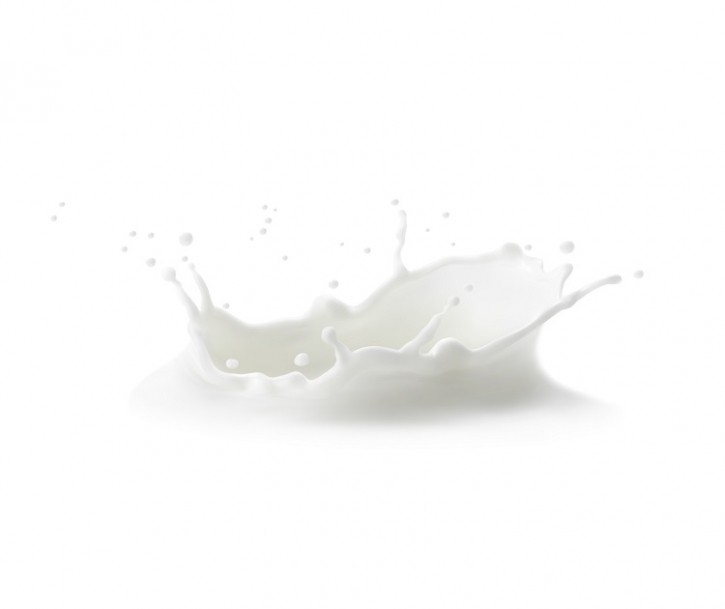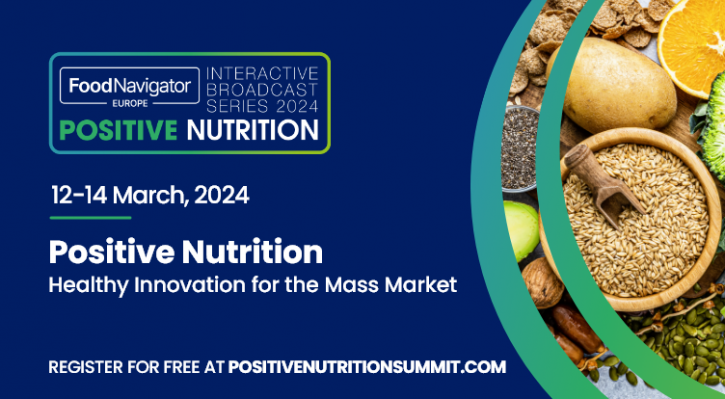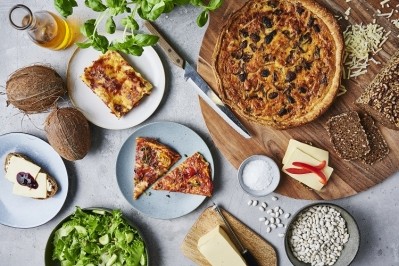Hybrid dairy: How can innovators unlock a new category’s potential?

Take a stroll along the refrigerated aisle and you’ll find a dairy section spanning milks, yogurts, cheeses and creams. Probably not too far away, you’ll also find the plant-based dairy section displaying similar products, dairy-free.
But what you’ll struggle to find is something in the middle: products that blend plant-based ingredients with dairy to create a new category, hybrid dairy. While this is certainly reflective of a lack of innovation, it does not suggest the category lacks appeal, according to market research firm Mintel.
How can innovators rethink the category, and in particular its messaging, to onboard new consumers?
Are consumers interested in hybrid dairy as a category?
It’s not often one comes across a dairy product explicitly marketed as a hybrid. The most notable, yet discontinued, was launched by French company Triballat Noyal under its Pâquerette & Compagnie brand in late 2021. The product blended 50% cow’s milk with 50% plant-based ingredients. At the time, Triballat Noyal said it wanted to offer consumers ‘new variety, great taste, and healthy nutrition’.
Although the product is no longer on shelves, consumer research suggests there is considerable interest in the blended dairy and plant-based category. In a handful of surveys conducted by Mintel in conjunction with either Kantar or Dynata over 2022-23, products appeared appealing to many.
In France, 42% of respondents agreed products that blend a dairy alternative main ingredient with dairy would be appealing; in the Republic of Ireland 56% of cheese users said they would be interested in trying hybrid cheese; and in Thailand 26% said they would be interested in trying hybrid yoghurt.
Plants mixed with dairy is not the only kind of hybrid
As new technologies come on board for the food and beverage industry, we’re seeing novel hybrids being developed for market. In what was described as a ‘major breakthrough’, Israeli start-up Wilk leveraged cellular agriculture to develop hybrid yoghurt product made with cultivated milk fat.
Research has also investigated whether swapping out a proportion of dairy in cheese with pulses and insects boosts the product’s nutrition and sensory properties.
Responding to consumer demands for flexitarianism (or flexi-dairy-anism)
The opportunity exists because consumers are increasingly identifying as flexitarians, meaning they are looking to increase the amount of plant-based foods – while reducing animal derived products – in their diets. In the dairy world, Mintel is calling this ‘flexi-dairy-anism’.
“In contract to the media coverage surrounding the plant-based trend in recent years, the majority of consumers who are re-examining their relationship with dairy are pursuing flexi-dairy-anism, i.e. consuming both dairy and plant-based milk,” explained Alice Pilkington, senior global food and drink analyst at Mintel.
According to Kantar and Mintel 2023 research, many consumers have not yet tried non-dairy milk: in the US, the figure was as many as 47% of survey participants. In the UK, research suggests plant-based milk consumers are also drinking dairy, with 80% of respondents saying they drank both plant-based and dairy milk in the last three months to April 2023.
So why aren’t consumers willing to give up dairy completely? Mintel’s Pilkington said the decision to consume both plant-based and animal-based dairy could lie in consumers continuing to enjoy the strong ‘taste credentials’ of dairy and a reluctance to completely give up conventional milk, yoghurt and cream.
As to the reasons why consumers are unwilling to rely solely on animal-based dairy, the reasons are ‘numerous’, including intolerance, a willingness to eat and drink healthier products, a belief that non-dairy is better for the environment, and a desire to consume more plant-based foods.
How can brands best appeal to flexitarian dairy consumers?
If dairy hybrids are considered a ‘whitespace’ opportunity within the market, then how can brands best hit the mark with consumers?
Mintel recommends making existing hybrid products more ‘actively relevant’ to flexi-dairy-an consumers by emphasising both dairy and plant-based ingredients. For example, a brand making a dairy yoghurt that contains oat flakes could better promote the inclusion of both ingredients, to appeal to dairy fans and flexi-dairy-ans at the same time.
The market research firm also suggests that hybrids be positioned as an affordable alternative to plant-based milk for a category of consumers it describes as ‘reluctant dairy lovers’. According to Kantar and Mintel research, 32% of people in Canada who do not consume non-dairy milk do so because they consider it too expensive.
From a nutrition perspective, adding plant-based ingredients to dairy products could also help keep fibre-conscious consumers engaged. “Added fibre holds broad appeal across dairy. For example, 65% of Polish consumers agree yoghurts and yoghurt drinks with added fibre would be appealing,” said Mintel’s Pilkington.
And finally, brands should communicate the taste and indulgence that plant-based ingredients can bring. “Whilst many consumers show future intentions to switch to more non-dairy options, taste concerns remain,” we were told.
“Consequently, hybrid dairy is at an advantage over non-dairy alternatives, given these products still contain some of the dairy taste that consumers enjoy.”
Keen to learn more about the nutritional credentials of plant-based alternative products? Register here for our free-to-attend Positive Nutrition digital summit event 12-14 March 2024.

























